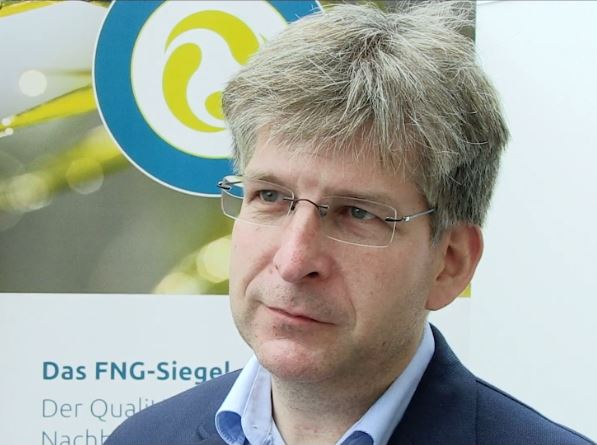INSIGHT SERIES by Roland Kölsch, Quality Assurance Company for Sustainable investments (QNG), Germany
| New, exciting topics, which become increasingly complex in the course of a development, always mean that society has reached the point of wanting to convey simple messages again. As understandable and media-psychological as this is in a development process to bring a core message (again) to the people, it is all the more necessary to provide for enlightenment in case of a too strong simplification and especially in case of a prayer mill-like repetition of many media of too simplified and then also often wrong messages.
In connection with the current efforts of the EU on Sustainable Finance, for example, there are a number of misleading statements that I would like to discuss in the framework of the article series Myths about the EU.
| Myth #1: The EU defines sustainable investments (published on 21.08.2020)
| Myth #2: The planned EU Ecolabel will identify sustainable investments (published on 28.08.2020)
| Myth #3: The ESG-Score of a Fund Shows How Sustainable an Investment Is (published on 07.09.2020)
| Myth #4: An article 9 product is an Impact-Product, an article 8 product not
The study “Can Sustainable Investing Save the World? Reviewing the Mechanisms of Investor Impact“1, summarised in this article, provides important insights to the question about how and to which extent investments or investors contribute to a (more) sustainable world in terms of impact. This is a discussion that is necessary to create clarity around the concept of impact investments.
Since the turn of the millennium, sustainable investments with different investment styles have emerged from within the market. Classical methods, which are often combined with each other, are divestments (exclusion criteria), best-in-class, dialogue strategies, thematically oriented and so-called impact investments. The investment styles cover many of the risk/return objectivesof investors in conjunction with their individual expectations of the sustainability of the investment. Twenty years of this market development have produced corresponding standards – now even with external and independent verification.
Now, with the ongoing “mainstreaming” and the sharp rise in the number of products, it is understandable from a marketing point of view that asset managers want to create a recognition factor that is as catchy as possible and is already reflected in the name of their products. And since there are already many best-in-class funds, especially in the investment fund sector, there is now an increasing focus on the concept of impact investment, which is at the very edge of the SRI spectrum and has so far mostly been reserved for specialised providers and originated in the foundation sector. Usually referred to as the “top class” of sustainable investments.
Impact Investing2 primarily aims to invest in companies and organisations in order to achieve concrete, measurable, positive effects in the sense of sustainability3. The social or environmental impact is part of the investment strategy and is measured. Impact Investing thus differs from classical sustainable investments, but also from donations or philanthropy, i.e. Impact Investing closes the gap between (mostly) risk-return balanced sustainable investments and donations4 (p.5).
The decisive difference in the classic SRI spectrum is the explicit determination of impact targets and their measurable proof.
In contrast to the empirical facts that sustainable investments in general and on a long-term average have a risk/return ratio that is at least in line with the market, this is not necessarily the case for the sub-category impact investments5.
Key elements for impact investing are terms such as “intentionality”, “impact objectives” (with their definition and measurement), “capital preservation/financial return” and “additionality”. Proof of the latter, i.e. showing that a sustainability effect would not have been occurred without the investment made, is usually omitted because it is hypothetical. In secondary markets, i.e. almost the entire fund market, there can in any case be no question of “additionality” in a strictly interpreted sense.
In general, a distinction is made between impact alignment (e.g. assignments to SDGs or other mappings) and impact generation (e.g. measurable concrete impact-progress, i.e. “change”, which is also clearly documented)6.
Incidentally, the basic understanding of this was provided by the Darmstadt Definition of Sustainable Investments, which was drawn up by various stakeholders back in 2004.
Within the framework of the EU action plan for financing sustainable growth, the regulator now takes on the task of formally and legally defining the already established market practice with the associated sustainability characteristics. The link between the EU green taxonomy, the Disclosure Regulation and the MiFID-II target market definition requires a discussion when it comes to classifying products.
The typology for sustainable financial instruments of the German associations BVI, DK and DDV and also EFAMAs ESG specifications that are quite similar provide a good, differentiating proposal with four product categories. However, the concepts of impact remain vague and it is no help to create a product category of the same name without giving concrete indications of its content.
Apart from this, the assignment of product categories to specific sections of the Disclosure Regulation is not a matter for the market, but is solely the responsibility of the regulator to decide whether the respective requirements are met. The current FinDatEx working group at EU level has also recognised this.
Indeed, if one considers the wording of the delegated act for sustainability‐related disclosures, which defines a “sustainable investment as an investment in an economic activity that contributes to an environmental [or social] objective“, it is clear that such impact-related effects can occur in financial products across the entire SRI spectrum, so it will not be easy to distinguish clearly between SRI in general and more impact-intensive impact investments in particular. Without valid systems for measuring impact, it will remain difficult to distinguish between “best-in-class”, “best-progress”, “engagement”, “theme investments”, etc. on the one hand and “impact investments” on the other. This is because a certain type of impact is also achieved with the first-mentioned investment styles (generally the third category of EFAMAs and the German associations’ typology concept), which must be disclosed in accordance with Art. 8 + 9 of the DisclosureDA. The mere fact that a product discloses under Art. 9 does not make it automatically an impact product. It is precisely here that approaches which seek to equate SRI investment styles specifically with these two articles are mistaken.
Indirect and direct impact effects, which occur more or less frequently in all SRI investment styles, will (have to) be reported anyway under the disclosure regulation.
Therefore, current SRI-guidance tools such as ratings, KPIs and Labels do not (yet) aim to provide precise SRI product classifications such as “ESG consideration”, “ESG strategy” or “Impact”, but instead focus either on concrete ESG scores (as a general measure of how companies at aggregated portfolio level deal with their respective ESG risks in relative sectoral terms), specific KPIs (quantifying individual sustainability aspects) or, in the form of SRI-Labels, on a holistic assessment with regard to the sustainability quality of the financial product, in order, among other things, to provide an indication about the potential for achieving impact in terms of sustainability.
In the interests of product-clarity and -truth, caution is therefore advised when using the term “impact investment”. Nothing less than the credibility of the financial product is at stake and ultimately it is about investor protection and product liability.
| brief bio
Roland Kölsch, former traditional and SRI fund manager, is the managing director of the Quality assurance company for sustainable investments (QNG), being responsible for the FNG-Label.
He has been working in the field of sustainable investments in Germany and abroad for more than 15 years and currently contributes his expertise also to EU working groups on sustainable finance.
| about
QNG (Qualitätssicherungsgesellschaft Nachhaltiger Geldanlagen mbH) as an FNG subsidiary contributes to the quality assurance of sustainable investments through the certification of financial products, expert opinions and the development of standards and services. It has overall responsibility for the FNG-Label: www.qng-online.de
| All opinions expressed are those of the author. investESG.eu is an independent and neutral platform dedicated to generating debate around ESG investing topics.








